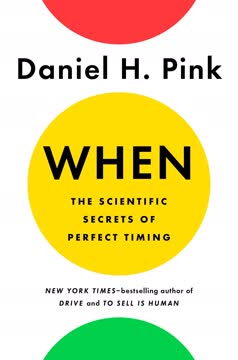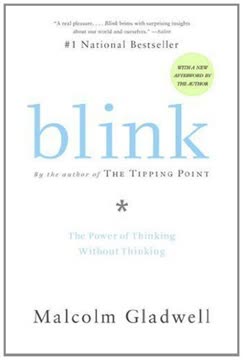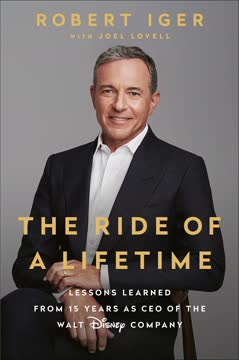Key Takeaways
1. Malls are modern marketplaces reflecting society's evolution
"The mall has been with us always, under other names and in somewhat different forms. Virtually since the dawn of civilization, we have organized our world in part around the function of shopping."
Historical context: Malls are not a new concept, but rather an evolution of ancient marketplaces. They serve as microcosms of society, reflecting our values, desires, and social structures.
Cultural significance: Malls have become more than just shopping centers; they are community gathering spaces, entertainment venues, and economic drivers. They offer insights into consumer behavior, fashion trends, and societal norms.
Societal impact:
- Suburban expansion and car culture facilitated mall growth
- Shift from downtown shopping districts to enclosed suburban centers
- Malls as "third places" between home and work
- Influence on teenage social life and consumer habits
2. Mall design influences shopper behavior and spending patterns
"We now have several generations of Americans who have never walked for any length of time in cities or even towns. They ride everywhere and walk only here, at the mall. Which is quite a bit different from walking anywhere else."
Architectural manipulation: Mall layouts are carefully designed to maximize shopper engagement and spending. Key elements include:
- Strategic placement of anchor stores
- Wide, straight corridors for easy navigation
- Escalators and elevators to encourage multi-level exploration
- Limited natural light and clock visibility to create a timeless environment
Psychological tactics:
- Sensory stimulation through music, scents, and visual displays
- Creating a sense of discovery and excitement
- Encouraging impulse purchases through strategic product placement
- Providing rest areas to extend shopping time
Traffic flow management: Malls use various techniques to control shopper movement and exposure to stores, such as:
- Positioning popular stores far apart
- Creating "zones" for different types of shopping (e.g., luxury, teen-oriented)
- Using kiosks and temporary displays to break up long corridors
3. Gender differences significantly impact mall experiences and retail strategies
"Men shop like they drive. They refuse to ask directions unless they are absolutely desperate. Inside a store, it is our experience, men will bolt in this direction and then that, trying to find what they came in for."
Male shopping behavior:
- Goal-oriented and efficiency-driven
- Less likely to browse or comparison shop
- Prefer quick, straightforward shopping experiences
- More likely to use technology for research and purchases
Female shopping behavior:
- More likely to enjoy shopping as a leisure activity
- Prone to browsing and comparison shopping
- Influenced by visual merchandising and store atmosphere
- More likely to shop in groups or as a social activity
Retail strategies:
- Creating male-friendly spaces within malls (e.g., electronics stores, sports shops)
- Providing seating areas or "man caves" for non-shopping companions
- Tailoring store layouts and product presentations to gender preferences
- Offering personalized services and experiences to appeal to different shopping styles
4. Visual merchandising and store layout are critical for sales and brand identity
"If you notice it, it's probably because it's either too dim or too bright. Some stores manage this better than others."
Lighting: Proper illumination is crucial for showcasing products and creating ambiance. Considerations include:
- Color temperature and rendering
- Spotlight placement for highlighting key items
- Balancing natural and artificial light sources
Display techniques:
- Use of mannequins and product groupings
- Creating lifestyle vignettes to inspire purchases
- Rotating displays frequently to maintain interest
- Utilizing digital screens for dynamic content
Store layout principles:
- Creating a clear path for shoppers to follow
- Positioning high-margin items in prime locations
- Using "speed bumps" to slow down shoppers and encourage browsing
- Designing checkouts to minimize wait times and maximize impulse purchases
Brand consistency: Visual elements should reinforce the brand's identity and target demographic, including:
- Color schemes and materials
- Signage and graphics
- Music and scent marketing
- Staff uniforms and behavior
5. The food court: A social hub and strategic profit center
"Part of shopping is discovering. It may even be a very important part of its appeal. It feels as though it's tapping into some primordial instinct we have for hunting or gathering—we like the actual process of finding things."
Evolution of mall dining: Food courts have transformed from simple refueling stations to diverse culinary destinations. Key developments include:
- Introduction of international cuisine options
- Integration of higher-end restaurants and food halls
- Focus on healthier and locally-sourced options
- Incorporation of entertainment elements (e.g., live music, cooking demonstrations)
Strategic benefits:
- Increases dwell time in the mall
- Attracts diverse customer demographics
- Provides a gathering space for families and groups
- Generates significant revenue through high-margin food sales
Design considerations:
- Creating a welcoming, open atmosphere
- Offering varied seating options (e.g., communal tables, private booths)
- Incorporating charging stations and Wi-Fi access
- Using aesthetically pleasing and easy-to-clean materials
6. Adapting to changing consumer demographics and preferences is crucial for mall survival
"We are living in a time when, nationally, crime is down, especially the personal, violent offenses that worry us most—murder, robbery, rape, and assault. The danger of urban streets, whether real or presumed, is part of what drove us to the suburbs and then to the mall in the first place."
Shifting demographics:
- Aging population with different shopping needs
- Increasing diversity in suburban areas
- Rise of millennial and Gen Z consumers with unique preferences
Technological integration:
- Embracing e-commerce and omnichannel retailing
- Incorporating smart technology for improved shopping experiences
- Utilizing data analytics for personalized marketing and inventory management
Experience-driven retail:
- Creating immersive brand experiences
- Hosting events and workshops to drive foot traffic
- Integrating entertainment and leisure activities
Sustainability and social responsibility:
- Incorporating eco-friendly design and operations
- Supporting local businesses and artisans
- Engaging in community outreach and charitable initiatives
7. Global variations in mall culture reveal societal differences and retail innovation
"While malls are an American innovation, a lot of the most interesting development work is happening outside North America."
Cultural adaptations: Malls around the world reflect local customs, preferences, and social structures. Examples include:
- Asian malls integrating public transportation hubs
- Middle Eastern malls as climate-controlled social spaces
- European malls emphasizing high-end fashion and dining
Innovative concepts:
- Themed malls (e.g., Dubai's Ibn Battuta Mall)
- Mixed-use developments combining retail, residential, and office spaces
- Integration of cultural institutions (e.g., libraries, museums)
Technological advancements:
- Robotic customer service assistants in Japanese malls
- Virtual reality shopping experiences in South Korean malls
- Cashless payment systems in Chinese retail centers
Sustainability initiatives:
- Green building design and energy-efficient operations
- Incorporation of urban farming and green spaces
- Emphasis on locally-sourced products and circular economy principles
8. The future of malls: Balancing commerce, community, and entertainment
"Malls probably don't need to make much special effort to keep dangerous elements out. There's already a remarkably efficient self-regulating mechanism that maintains orderliness in the world of shopping."
Evolving role: Malls are transforming from pure retail spaces to multifunctional community hubs. Future developments may include:
- Integration of healthcare facilities and wellness centers
- Expansion of educational and vocational training spaces
- Incorporation of co-working and start-up incubators
Technology integration:
- Augmented reality wayfinding and product information
- Personalized shopping experiences through AI and big data
- Seamless online-offline integration (e.g., click-and-collect services)
Experiential retail:
- Pop-up stores and rotating brand experiences
- Interactive product demonstrations and workshops
- Virtual reality travel experiences and gaming centers
Community focus:
- Creating public spaces for gatherings and events
- Hosting farmers markets and artisan fairs
- Offering community services (e.g., libraries, government offices)
Adapting to changing consumer behavior:
- Balancing convenience and experience
- Addressing concerns about sustainability and ethical consumption
- Catering to diverse demographics and lifestyles
Last updated:
FAQ
What's Call of the Mall about?
- Exploration of Shopping Malls: Call of the Mall by Paco Underhill examines the cultural and social significance of shopping malls in America, exploring their evolution and impact on consumer behavior.
- Anthropological Perspective: Underhill, a retail anthropologist, provides insights into how people interact with retail environments, focusing on shopping habits and emotional connections to malls.
- Historical Context: The book places malls within a historical framework, likening them to ancient marketplaces and emphasizing shopping as a fundamental aspect of human civilization.
Why should I read Call of the Mall?
- Understanding Consumer Behavior: The book offers valuable insights into consumer motivations and decision-making, essential for those interested in marketing, retail, or consumer psychology.
- Cultural Commentary: Underhill critiques mall design and function, encouraging readers to reflect on their shopping experiences and societal values.
- Engaging Anecdotes: Filled with stories and observations, the narrative is both entertaining and educational, thanks to Underhill’s humor and keen insights.
What are the key takeaways of Call of the Mall?
- Malls as Social Spaces: Malls function as modern community centers for socializing and entertainment, reflecting societal trends and consumer behavior changes.
- Design Matters: The layout and design of malls significantly influence shopper behavior, with inviting spaces enhancing the shopping experience.
- Consumer Identity: Shopping is linked to personal identity and self-esteem, with consumers often seeking validation and status through purchases.
What are the best quotes from Call of the Mall and what do they mean?
- “We’re here to buy stuff.”: This quote highlights the transactional nature of shopping, reflecting the simplicity of consumer motivations amidst complex social interactions.
- “The mall is a contemporary version of the souks, bazaars, arcades, bourses, and markets of olden days.”: Underhill draws parallels between modern malls and historical marketplaces, emphasizing the communal nature of commerce.
- “Malls account for around 14 percent of all U.S. retailing.”: This statistic underscores the significant economic role of malls, highlighting their importance in retail and marketing.
How does Underhill define the concept of "retail anthropology" in Call of the Mall?
- Study of Consumer Behavior: Retail anthropology involves observing and analyzing consumer interactions with retail spaces to understand shopping habits and preferences.
- Field Research: Underhill conducts extensive fieldwork in malls, observing shoppers in their natural environment to gather authentic insights.
- Cultural Insights: By examining shopping as a cultural phenomenon, retail anthropology reveals societal trends and values, reflecting broader human experiences.
What role do food courts play in malls according to Call of the Mall?
- Social Gathering Spaces: Food courts serve as communal areas for relaxation and socialization, enhancing the overall mall experience.
- Economic Impact: They contribute significantly to mall revenue by encouraging longer shopper stays, often leading to increased retail purchases.
- Diverse Offerings: The variety of food options caters to different tastes, reflecting the multicultural nature of modern society.
How does Underhill describe the evolution of mall design in Call of the Mall?
- Shift from Open-Air to Enclosed Malls: The transition to enclosed malls in the mid-20th century was driven by consumer preferences for comfort and convenience.
- Architectural Challenges: Underhill critiques the often bland architecture of malls, advocating for more engaging designs to attract shoppers.
- Cultural Reflections: Mall design mirrors societal values and consumer behavior shifts, emphasizing the need for adaptation to evolving shopper needs.
What insights does Call of the Mall provide about gender differences in shopping behavior?
- Women as Primary Shoppers: Women often make household shopping decisions, influenced by social and emotional factors, leading to more time spent in malls.
- Men's Shopping Styles: Men typically shop with a utilitarian approach, seeking efficiency, which affects store layouts and marketing strategies.
- Impact of Design: Retail spaces can cater to gender differences, with women preferring environments that allow exploration and social interaction.
How does Underhill address the concept of "status anxiety" in Call of the Mall?
- Consumer Identity: Shopping is tied to personal identity and self-esteem, with consumers seeking validation through purchases, leading to status anxiety.
- Social Comparison: The pressure to keep up with peers influences shopping behavior, driving purchases that reflect social status.
- Retail Strategies: Retailers can leverage status anxiety by creating exclusive, luxurious environments, tailoring marketing to meet consumer desires.
What are some examples of innovative retail strategies discussed in Call of the Mall?
- Pushcarts and Kiosks: These small retail spaces offer unique products and experiences, attracting attention and driving impulse purchases.
- Experiential Retail: Creating engaging shopping experiences, such as interactive displays and events, goes beyond traditional retail to draw shoppers in.
- Community Engagement: Hosting community events fosters a sense of belonging and loyalty, encouraging social interaction and connection.
How does Call of the Mall explore the historical context of shopping malls?
- Modern Marketplaces: Underhill positions malls as modern equivalents of ancient marketplaces, emphasizing their role in commerce and community.
- Evolution Over Time: The book traces the development of malls from open-air centers to enclosed spaces, reflecting changes in consumer preferences.
- Cultural Significance: Malls are portrayed as cultural landmarks, mirroring societal values and trends throughout history.
What does Call of the Mall reveal about the emotional connections people have with malls?
- Social Spaces: Malls are more than shopping venues; they are places for socializing and entertainment, fostering emotional connections.
- Nostalgia and Memory: Many people associate malls with personal memories and experiences, contributing to their emotional significance.
- Identity and Self-Esteem: Shopping at malls is linked to personal identity, with purchases often reflecting self-esteem and social status.
Review Summary
Call of the Mall receives mixed reviews, with an average rating of 3.63 out of 5. Some readers appreciate Underhill's insights into mall design and consumer behavior, finding it an entertaining and nostalgic look at retail culture. Others criticize the book for being outdated, sexist, and lacking hard data. Many note that while it offers interesting observations, it's not as compelling as Underhill's previous work. Some readers find the conversational style engaging, while others find it annoying. The book's predictions about the future of malls are seen as prescient by some reviewers.
Similar Books
Download PDF
Download EPUB
.epub digital book format is ideal for reading ebooks on phones, tablets, and e-readers.










